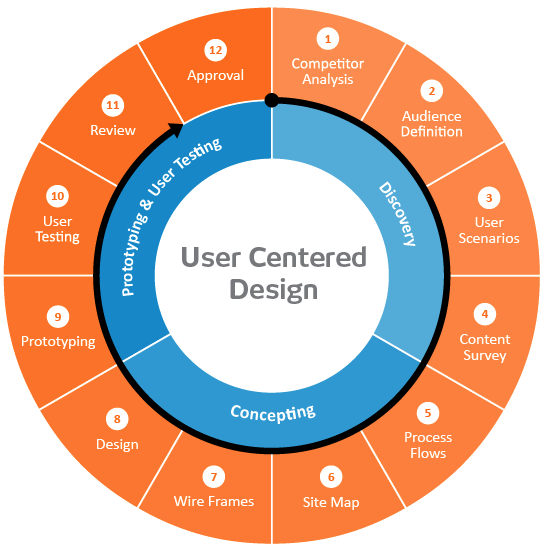User-centered design has been enjoying some much-deserved attention in the public consciousness of late. Though studies have been around for years showing that a $1 investment in user-centered design can yield a return of between $2 and $100, it seems they have only recently caught the attention of marketing and IT managers who control software development purse strings.
This is a welcome development for all professionals in the UX design field. However, as is often the case when something suddenly becomes a hot topic, much of the discussion around user-centered design has been pretty loose and fast. For UX professionals it can be distressing to discover that what is considered user research can be sometime be ill formed and incomplete.
What’s Missing?
Actual users. Too often organizations that recognize the importance of user-centered design stop short of performing the research with actual users. Satisfied with anecdotal information cobbled together from second-hand sources by company marketing or sales departments, they create a few personas, conduct a quick needs analysis, and then compile a list of features the website will need. All without actually meeting the target user base.
What’s wrong with that?
A lot. According to the Standish Group, 60% of software maintenance phase expenses are a result of rework caused by the lack of accurate user requirements at the beginning of development. If you don’t know your real users and their needs at the outset of a project, you’ll pay for it later.
Why Don’t Companies Do It?
They think it’s difficult. Many companies have the mistaken idea that using real customers for research is expensive and time consuming. It doesn’t have to be either. The information that follows outlines a research methodology that will add little to your bottom line and insure a healthy ROI on your endeavors.
Who Do I Interview?
People who represent your market targets. The best place to start is by thinking about your current user base as well as prospects your organization is targeting for new business. Create personas that reflect your market targets. Personas should be detailed enough for you to use for screening prospective user interview subjects.
Can’t Find Interview Subjects?
Start with faithful customers. If your marketing department has done its job, you should have enough customer information to create lists of people who meet individual persona criteria. If you are going after a new market, consider hiring a market research agency that specializes in recruitment. You may also try using TaskRabbit or other online services that facilitate research subject procurement.
Quant or Qual?
Both. You’ll need to get both quantitative data as well as qualitative findings. Google offers a new consumer survey platform that can be effective in finding the right people to provide the data you’re looking for. SurveyMonkey has been around for a while and I often use it to procure my quantitative data. It’s also nifty for screening participants for your focus groups and interviews.
Can’t get your subjects to come to you?
Do it online. Most online conferencing tools offer screen share and video capture functionality. Have your stakeholders log in if they want to see your research session live. Testing websites on mobile devices remotely can be a little more problematic. There are a number of new phone usability apps that have come on to the market in the past two years. Most do not connect well with conferencing tools. I usually perform my mobile tests in person and use screen mirroring to share with stakeholders who cannot be present in my interview location.
How Many Interview Subjects?
Fewer than you probably think. The exact number of subjects you will need for your research is dependent on the number of personas you have created. My rule of thumb is to use as many subjects as possible (or as many as you can afford) to do basic quantitative research. For focus groups and interviews, my minimum is 5 subjects per persona. This number is based on quite a bit of research conducted by Jakob Nielsen and Steve Krug, two leading UX research gurus.
Authenticity = Success
The more research you conduct with real users, the more you will save on re-architecting. Investing time in research that gives you an in-depth understanding of your prospects and customers will likely result in their wanting to interact with your business and purchase your products and service.
